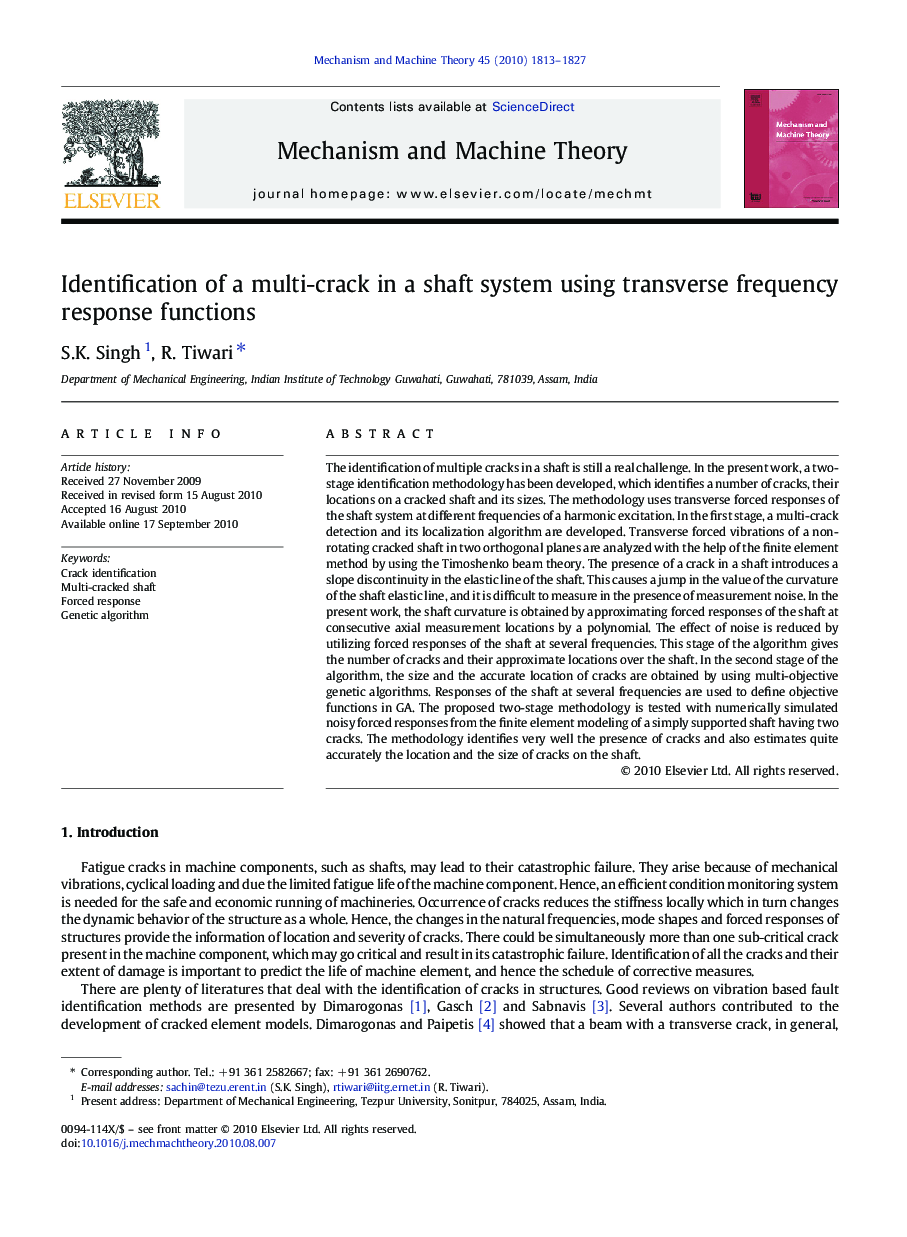| Article ID | Journal | Published Year | Pages | File Type |
|---|---|---|---|---|
| 804911 | Mechanism and Machine Theory | 2010 | 15 Pages |
The identification of multiple cracks in a shaft is still a real challenge. In the present work, a two-stage identification methodology has been developed, which identifies a number of cracks, their locations on a cracked shaft and its sizes. The methodology uses transverse forced responses of the shaft system at different frequencies of a harmonic excitation. In the first stage, a multi-crack detection and its localization algorithm are developed. Transverse forced vibrations of a non-rotating cracked shaft in two orthogonal planes are analyzed with the help of the finite element method by using the Timoshenko beam theory. The presence of a crack in a shaft introduces a slope discontinuity in the elastic line of the shaft. This causes a jump in the value of the curvature of the shaft elastic line, and it is difficult to measure in the presence of measurement noise. In the present work, the shaft curvature is obtained by approximating forced responses of the shaft at consecutive axial measurement locations by a polynomial. The effect of noise is reduced by utilizing forced responses of the shaft at several frequencies. This stage of the algorithm gives the number of cracks and their approximate locations over the shaft. In the second stage of the algorithm, the size and the accurate location of cracks are obtained by using multi-objective genetic algorithms. Responses of the shaft at several frequencies are used to define objective functions in GA. The proposed two-stage methodology is tested with numerically simulated noisy forced responses from the finite element modeling of a simply supported shaft having two cracks. The methodology identifies very well the presence of cracks and also estimates quite accurately the location and the size of cracks on the shaft.
